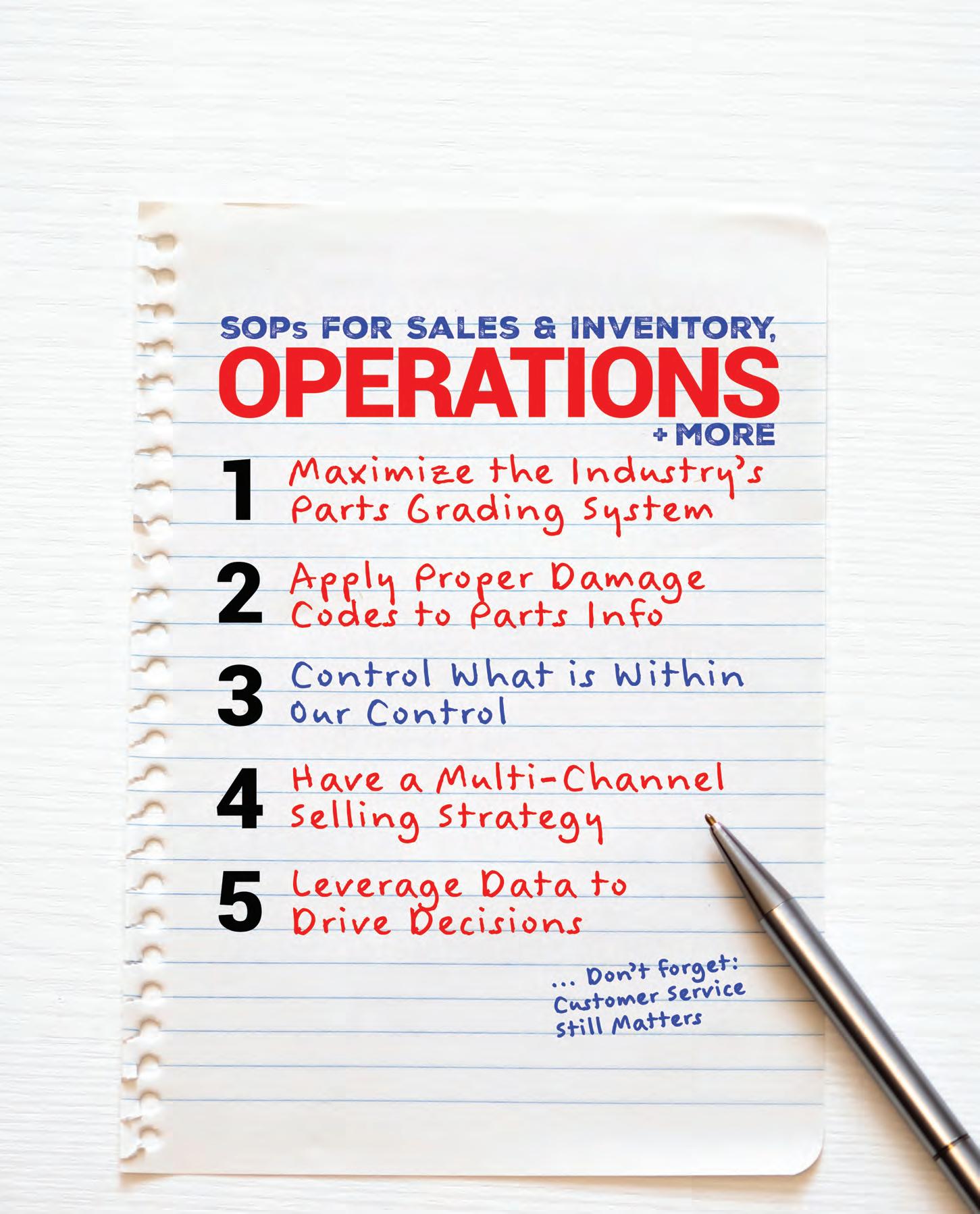
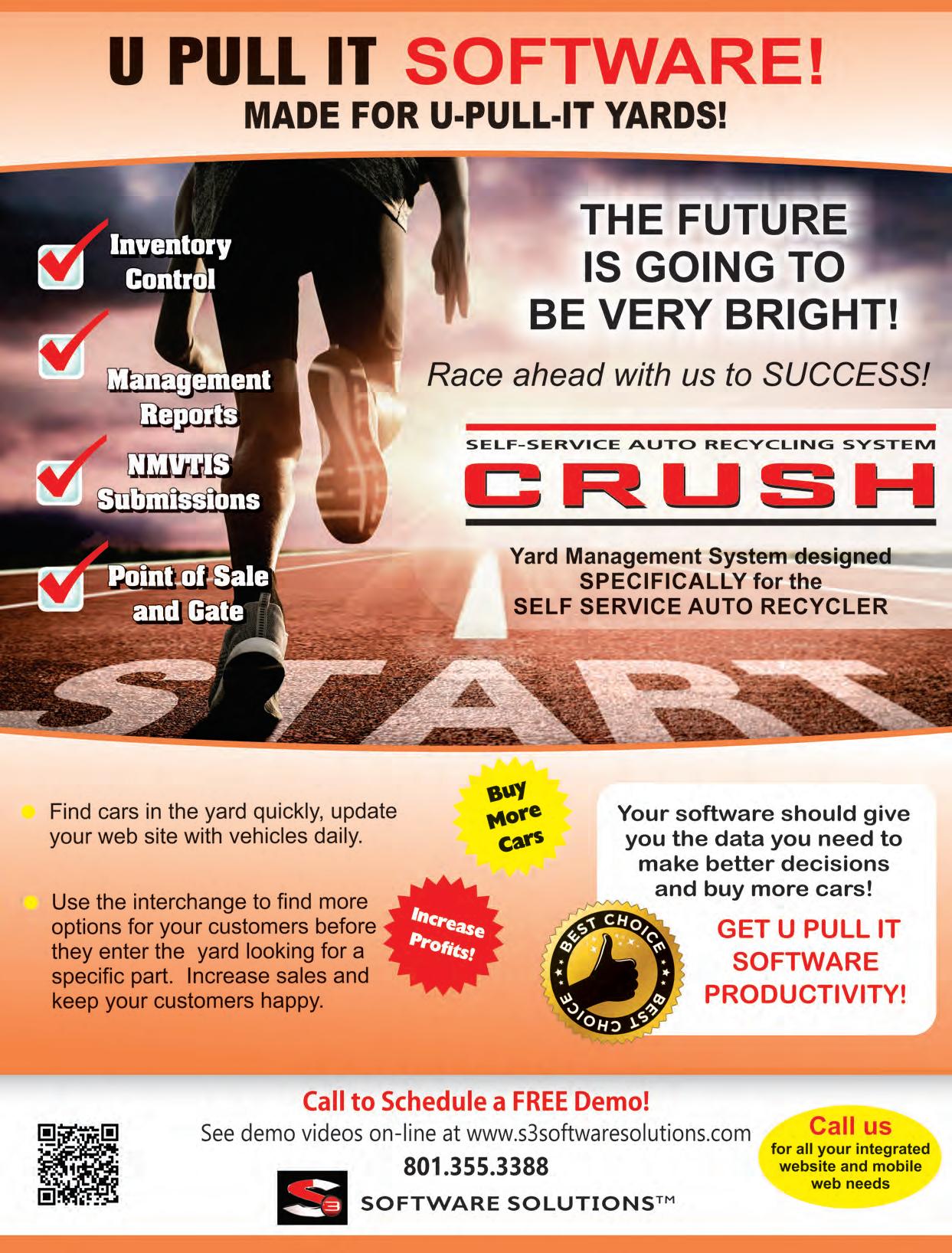
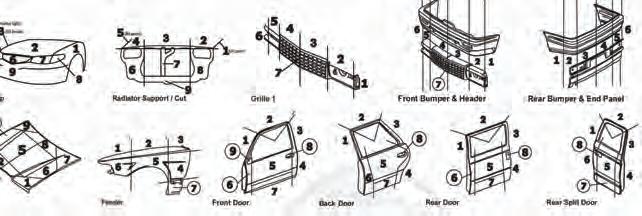
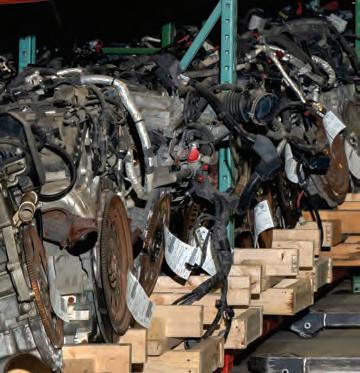
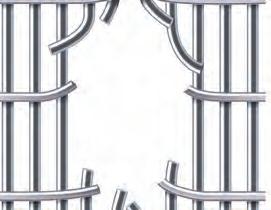

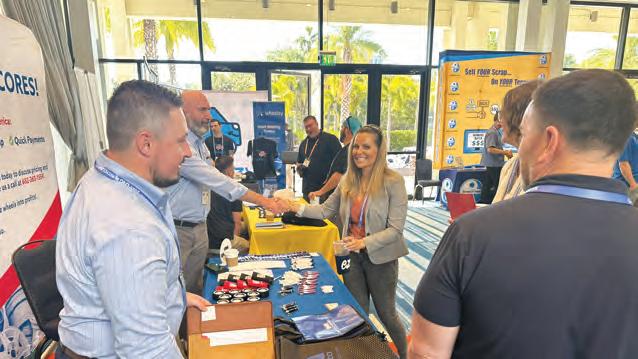








“Beauty is in the eye of the beholder,” the epitome of perception being subjective and consequently divergent. Every day, we train the inventory specialists to be detail-oriented and accurate in their assessments and descriptions. Then, qualified salespeople listen to our customers’ needs and pitch ROE-Recycled Original Equipment (ROE) auto parts, selling our services accordingly. Yet, often, we find discrepancies between the inventory and the sales process.
For instance, a body shop refuses our used door with a reported 5D1 damage code. It is a very nice door, mind you, with a credit card-sized dent, which our sales representative communicated to the shop. However, the customer says it has 3 hours’ worth of cleanup and will not use it. So we take it back and refund their money. However, a repair shop then takes that same 5D1 damage-code door that the body shop refused and bolts it onto their customer’s vehicle. Usually, no one in your business asked questions, and no one made adjustments.
Our perceptions are conditioned and unique, shaped by the expectations we have formed from prior experiences and our situational understanding. With so many different and sometimes conflicting perceptions to accommodate, how do we find common ground? How can we standardize our processes and products to meet the diverse and varied expectations of our customers? Our resolve may lie within the ARA Parts Grading System.


The Automotive Recyclers Association (ARA) Parts Grading System serves as a valuable guide and foundation for your inventory. You will find that all the resources we rely on daily to sell parts use parts grading in their databases. We should educate ourselves and our customers on the inner workings of this cipher. This system is evolving based on the resources and feedback required to be an industry-wide, effective system. Members of the ARA Certified Automotive Recycler (CAR) Program and the ARA Interchange Committee ensure that the grading system meets and exceeds current industry standards.
There are numerous challenges we face in our journey towards becoming more transparent with our inventory. Embracing standard industry practices lessens the overall load we carry. Let’s walk through the basics.
Grade A – Like New, Almost: Grade A parts are the cream of the crop. They come from vehicles that are relatively new and have low mileage. These parts are often in excellent condition, with minimal wear and tear. In many cases, Grade A parts are nearly indistinguishable from brand-new components. They are high-quality, budget-friendly parts for any vehicle repair.
Grade B – A Step Below, but Still Reliable: Grade B parts are the middle tier of ROE® parts. Recycled from vehicles that exhibit wear and tear, they range from moderate to higher mileage usage. While they may not be as pristine as Grade A parts, Grade B components offer a reliable and cost-effective solution that does not sacrifice quality.
Grade C – Affordable and Functional: Grade C parts are the most budgetfriendly option. They typically come from older vehicles with higher mileage or significant wear and tear. These can
Brian Bachand is a second generation auto recycler, who helps own and operate Westover Auto Salvage in Belchertown, MA. He is on the Board of Directors for the Auto Recyclers Association of MA and a proud ARA Member. Brian has a Bachelor’s Degree in Accounting and paired with almost 25 years of auto recycling experience, will continue to implement ARA Advocacy for being a leader in the auto industry.

be hard-to-find parts for vehicles that may have no other replacement options for parts. Grade C parts may exhibit signs of use and may require cosmetic repair; however, they are very functional for reuse.
The second aspect of ARA’s Parts Grading System is the Damage Codes, which illustrate the correct identification of part damage in your descriptions (see Figure 1). For those new to the scene, you can find a copy of the ARA Damage Code Guide at ARA University at https://arauniversity.org/wp-content/ uploads/2019/08/Damage Locator_Final.pdf. Print out and distribute this handy guide to your team. Post the guide on your website for easy reference, allowing your customers to use it. You can even visit the Commercial Forms website and order custom clipboards with the codes at https://www.commercialforms. com/custom-clip-board-2357.html or a 4’ by 8’ vinyl banner at https://www. commercialforms.com/banner-aradamage-codes.html.
Our perceptions are conditioned and unique, shaped by the expectations we have formed from prior experiences ... With so many different and sometimes conflicting perceptions to accommodate, how do we find common ground?
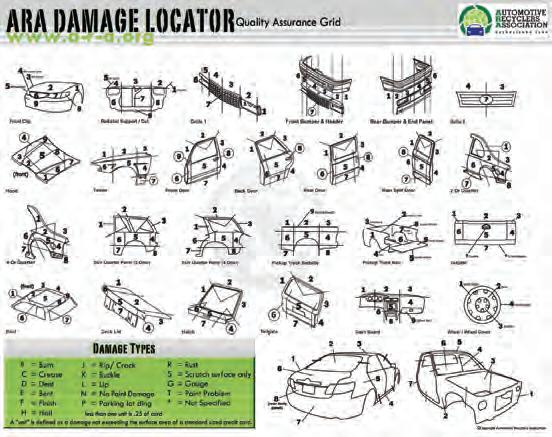
As a refresher, damage locations always follow the same pattern: Front to back, top to bottom, left to right in an “S” pattern, with locations for door handles and mirrors. Codes are location, damage, and hours. Example: “2D1” is a onehour dent in location 2. There may be a primary and secondary code per part, as in “2D1, 4S2.” If there is no damage on a part, the code is 000. Zero as a location indicates the entire panel, as in 0H4, all over hail damage, 4 hours.
Learn it, live it, love it. It might not be “Eat, Pray, Love,” but the ARA Parts Grading System with Damage Codes has the power to reshape and retool your entire inventory. This system is an ARA trademark standard operating procedure, serving as the lens through which a responsible and exemplary auto recycler should view and inventory their parts. Everyone within every department of
our business must be familiar with and proficient in their understanding of the ARA Parts Grading System. It is even more crucial that we continually educate our customers about this system, ensuring that we effectively communicate how it is implemented and interpreted.
If you are an ARA Member, you have FREE access to ARA University (arauniversity.org), where you and your team can be trained and refreshed on the system (https://arauniversity.org/ courses/inventory-specialist/.) This easy-to-understand video features ARA Executive Director Vince Edivan and Interchange Committee Chairperson Emily Yancey of Yancey Auto Salvage, who present a hands-on, engaging, and informative tutorial on best practices for assessing, applying, and implementing the ARA Damage Codes.
Viewers understand how the amount of damage correlates with the tier of part condition and which market to target with each part grade. The training illustrates that this standardization
is not rocket science. It is as straightforward as we choose to perceive it.
As a baseline, ROE® auto parts should have clear and concise descriptions that accurately account for the damage codes and include corresponding high-quality pictures, which is what we should strive to standardize.
Learning and applying this information removes uncertainty and risks of misrepresenting our parts for sale.
As a next step, we must determine:
• How and where we should market our parts.
• How to effectively integrate the ARA Damage Codes and the Parts Grading System into our operational system.
• What types of customers should we connect to each grade of parts, considering our inventory types?
This is where customer service comes into play, and there is a standard for that, too.
The Gold Seal Standard represents the next level of industry excellence that we must all strive to achieve, and it may be the piece we need to connect the dots. The best in the industry are already applying these practices, and it is time to adopt this mindset as a standard operating procedure (SOP).
Initially marketed as an ARA Certification, the Gold Seal Standard has evolved into an industry-wide effort facilitated through collaboration among ARA and the United Recyclers Group (URG). Team PRP also adds in guidance on logistics and shipping standards of excellence to round out the standards.

ARA and URG have joined together to promote excellence in quality assurance throughout their memberships. According to their news release in April, they will merge the URG’s 9000 certification program with the Gold Seal certification system. The merged Gold Seal Quality Assurance Certification program rep resents a “transformative moment in industry col laboration and excellence,” the ARA and URG said in a joint statement.

Furthermore, Team PRP has excellent product presentation and shipping guidelines that can help the entire industry understand the importance of higher quality standards for inventory, including the impact that delivery to the customer has on sticking the sale.
All this news is to say: We can control what is within our control.
While customer perceptions may still vary, if we, as an industry, adopt common standards such as those noted here, we will likely provide our customers with a common baseline of expectations within this industry. Could this impact the overall acceptability of using ROE parts?
The fact remains that proper pricing is as important as detailed parts descriptions and accurate damage codes, and the rest. It is imperative to know your marketplace and cover your costs when evaluating your inventory. It is vital to understand the importance of accurate descriptions, set prices, and no surprises upon delivery.
The reality is even with pricing flexibility; there will always be those who do not want to pay our prices for used parts. There will still be confusion about the damage codes or the abbreviations we have listed. We have also all had experiences where some people expect brandnew OEM parts in terms of condition and
Auto recyclers who want easy access to the ARA Damage Codes for their employees can purchase custom order clipboards at commercial forms.com.
aesthetics from our used auto parts.
We have all had this experience: we evaluate what we believe is a good used body panel, possibly with a ding or a dent. We accounted for and communicated these discrepancies and damages, only to have the part refused or passed on because it was not triple zero (000) or because it did not meet customer expectations.
Yet, we continue to roll the dice in hopes that we are a good judge of customer expectations and communicate clear and reasonable perceptions of the parts’ condition. A personal favorite of mine is when we think our customer is a “worker” and will “make it or work,” only to have the part come back because the shop “doesn’t do rust” anymore. Or the body person was looking to “just bolt it on.”
How do we combat these differences in perceptions and expectations?
Our best hope is to shift our paradigms to meet the demands of our customers better. Re-evaluating our perceptions of customer expectations can help us simplify our processes and can guide us to how we want to market our parts. We all know our customers’ quirks, which vary in extremes from being very picky to willing to work with usable products, from won’t take anything with rust, to will take everything if the price is right. Your customer profile, which should include their feedback on the parts shipped and returned, is key to understanding how and what parts to promote to each targeted market.
The goal is to sell smarter, not harder. You should reconsider how to position your parts through the lens of different customer types. This process is all the
more manageable when your company has adopted industry-suggested standard operating procedures for presentation and delivery.
This process is easier said than done, given the nature of our daily operations. Constructive and efficient use of time is critical, as it enables us to communicate our perceptions and understand our customers’ expectations, ultimately creating continuous customer service that translates into quality assurance and customer satisfaction. Sound sales strategies will yield greater profits, even when you find that your parts are not triple zero (000) or bolt-on ready. To capitalize on this concept, we must ensure that we are transitioning our parts towards transparency.
One final piece is connecting the sales and inventory teams to cross-train and brainstorm the best directives to take, including what vehicles, parts, and part types to inventory, how to implement the grading system, and where and to whom to market and sell your product.
Transparency is a key attribute that our business and all our customers value. In the age of automation and speed, the humanity aspect has become a collateral casualty. One only needs to call your cable provider, bank, or favorite store, where all voice commands and responses, troubleshooting, and online shopping are facilitated by AI.
We have even introduced AI into our operations. This innovation has increased sales and optimized production, but in the process, we have suffered the loss of human empathy and problem-solving. We should stay up-to-date with cultural trends and market shifts. However, in light of this movement, it is imperative now more than ever that customer service keeps the auto recycler relevant and viable. How we relate to the customer and earn and keep their trust while supplying them with a quality product and a positive, memorable experience is the remedy to this rancorous riddle. Transitioning your inventory control and sales design towards transparency is a good ethical practice worthy of a 5-star
review and is also a proven revenue and reputation booster.
The process towards transparency starts with you. The key components include understanding customer perceptions, embracing industry-suggested best practices in parts descriptions, effective marketing to your identified target markets, teamwork between sales and inventory, excellence in parts handling and logistics processes, and utilizing all available educational tools for your team. Your entire team, with knowledge of these key elements, creates a transparent system within your business, which will be evident to customers.
The results of these efforts include optimized inventory control and customer quality assurance, a significant increase in sales potential while decreasing return rates, sales and inventory activity that is in sync, and a shipping and logistics program that presents your company in a positive light.
This process is all the more manageable when your company has adopted industry-suggested standard operating procedures.
The general business climate is undergoing rapid change. There are many factors outside of our control, so controlling what we can is essential. Failure to plan is planning to fail. Strategize how to alleviate risk.
It is time to turn the page in our industry and embrace the vision of a transparent and prepared future for the auto recycler.
Our stellar automotive recycler associations and organizations protect our existence. They bring forward-thinking ideas and systems to market through the ideas and insights of our peers who are volunteer leaders inside these organizations. Many of these peer volunteers have built very successful businesses that we
all admire. Instead of the mindset that these groups need us more than we need them, we may need them more now, more than ever.
Implement ARA’s Parts Grading System and its Damage Codes into your inventory. Adopt the Gold Seal customer approach. Join the organizations and take advantage of their training. Engage to change public and customer perceptions of our industry. These efforts will take time, but the only way to effect change is to start somewhere. If you need help, ARA also offers an excellent Mentoring Program that works one-on-one with recyclers looking to advance their business
So, let’s level up! TB
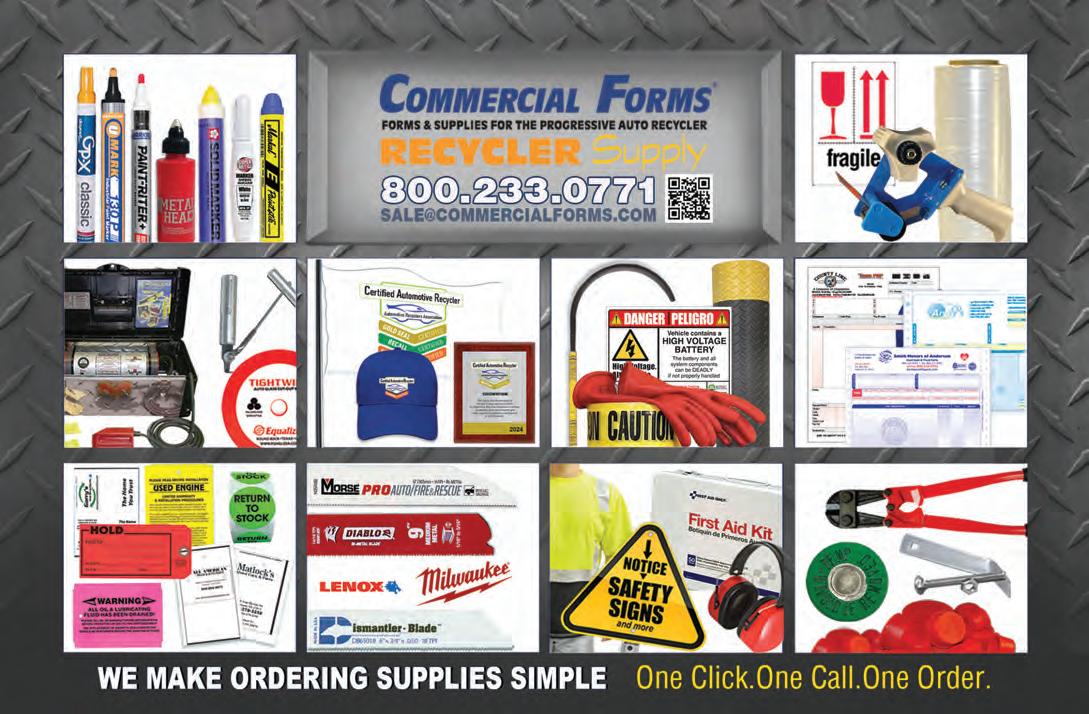
In the competitive world of auto recycling, where margins can be tight, and the landscape is constantly evolving, success often hinges on the efficiency and effectiveness of two core operational areas: inventory management and sales strategy. While the industry has made significant progress from paper logs and gut instincts, many facilities still struggle to fully leverage the potential of modern systems, data, and practices that can enhance profitability.
Let’s examine the essential elements of effective inventory and sales practices, offering practical guidance for recyclers seeking to enhance their operations and boost their profitability.
Inventory is the lifeblood of any auto recycling business. Whether you’re processing 50 or 5,000 vehicles a year, knowing what you have, where it is, and what it’s worth is foundational to every sale you make.
1. REAL-TIME, ACCURATE INVENTORY SYSTEMS
Gone are the days when manual tracking was sufficient. Modern inventory management software (like Hollander, Pinnacle, or Car-Part) allows recyclers to enter, categorize, and price parts with real-time visibility. These systems:
• Improve part lookup accuracy.
• Reduce duplicate entries and lost parts.


• Integrate with online sales platforms.
• Provide data analytics on inventory turnover.
• Accuracy in part descriptions, grading, and tagging also directly impacts customer satisfaction and return rates.
2. INVENTORY TURNOVER:
A KEY METRIC
• Inventory turnover – how quickly parts are sold – is a strong indicator of operational health. A stagnant inventory ties up capital, storage space, and labor. Set clear turnover goals and track the duration of parts remaining unsold. If parts have been sitting for more than 12 months, it may be time to reprice, bundle, or scrap them.
3. SOURCING SMART
• Not all vehicles are created equal from a resale perspective. Use historical sales
Jonathan Kusowski is the owner of JAK Environmental LLC and currently services stormwater programs in Minnesota, Wisconsin, and Michigan. His work focuses on developing SWPPPs, SPCCs, meeting with regulators, and making sure all facilities maintain compliance. In addition, he also conducts ARA audits and works closely with Sue Schauls as part of the CAR program. He holds a bachelor’s and master’s degree in Environmental Engineering from Marquette University.
data to guide your purchasing decisions. If Honda Civics consistently outsell older luxury models in your region, that should inform your auction buys. Smart sourcing leads to faster inventory movement and better ROI.
Building a Stronger Sales Strategy
While inventory is the foundation, sales execution is where the rubber meets the road. In today’s digital-first marketplace, relying on foot traffic or phone calls alone means leaving money on the table.
1. MULTI-CHANNEL SELLING
Auto recyclers must embrace a multi-channel approach. This includes:
• Your own website with a searchable parts catalog.
• Listings on platforms like eBay, Car-Part.com, and PartsLink24.
• Integration with collision repair networks and insurance platforms.
• Being present where customers are searching – including repair shops and DIYers – broadens your market reach and increases chances of making a sale.
2. PRICING STRATEGIES THAT REFLECT THE MARKET
• Dynamic pricing tools help recyclers adjust prices based on demand, availability, and competition.
• Overpricing leads to stale inventory; underpricing leaves profits on the table. Some systems even suggest optimal pricing ranges based on regional or national trends.
3. CUSTOMER SERVICE STILL MATTERS
• Even with digital tools, personal interaction remains a cornerstone of successful sales. Ensure your sales staff is knowledgeable, responsive, and empowered to solve problems. Excellent service leads to repeat business – particularly

from commercial accounts, such as repair shops and fleets.
Data can be an underutilized asset in many auto recycling facilities. Modern systems generate a wealth of information on:
• Best-selling parts.
• High-margin vehicles.
• Sales by region or season.
• Inventory aging trends.
• Regularly reviewing and acting on this data helps managers make informed decisions about which parts to stock, how to price them, and when to discount or remove slow movers.
• Monthly or quarterly performance reviews can uncover patterns such as a sudden drop in radiator sales or an uptick in calls for late-model electronic components. The faster you identify these trends, the more agile and profitable your operation becomes.
Inventory accuracy and sales efficiency are not just system-dependent – they’re people-dependent. Staff training on software use, grading standards, and customer communication is vital. Encourage employees to:
• Flag incorrect or outdated listings.
• Report commonly requested parts that are out of stock.
• Suggest improvements to the intake or dismantling process.
• Incentive programs tied to inventory accuracy, reduced returns, or sales goals can further align your team with business priorities.
As electric vehicles (EVs), hybrid components, and new materials enter the recycling stream, facilities must adapt their inventory practices and sales strategies accordingly. Battery modules,
inverters, and electronic sensors require specialized handling and knowledge –and may also present new high-margin opportunities.
Staying current on market shifts and emerging vehicle technologies will be critical for long-term success.
A well-run auto recycling facility doesn’t just collect vehicles – it moves inventory efficiently and profitably through smart sales strategies and datadriven management. By modernizing your systems, investing in your team, and staying tuned in to the market, you can position your facility for sustained growth.
Whether you’re a small operation or a regional powerhouse, the principles of strong inventory control and strategic selling apply. Master them, and you’ll see measurable improvements in your bottom line. TB


















BY THERESA COLBERT
Iget calls almost every day about things you can or cannot do on eBay. Or, calls when a customer is either in “eBay Jail” or “eBay Probation.” eBay WILL send you warning emails if you are doing something that does not meet their criteria or if your numbers are going below standard. However, with that being said, I believe they are no longer providing warnings on anything airbag-related unless you are a Certified Automotive Recycler (CAR) through ARA. Additionally, I have heard that they are cracking down on items like steering wheels, even those that require the removal of the airbag.
To provide some insight into this, I would like to discuss some standard best practices that many people are unaware of. eBay does not do the best job of providing users with information on what they accept and find unacceptable. Much of what eBay requires is because they pay Google about a gazillion dollars a month, and if it is good for Google, it is good for eBay!
For example, I have never personally seen this on an eBay site, but both Google and eBay don’t like you to use ALL CAPS IN YOUR TITLE! If you have been on eBay as long as I have (1997! Dang! I am old!) you will remember the old days of titles like this:
1999 TAHOE ALTERNATOR
***FREE SHIPPING****
Back then, we didn’t have OEM part numbers, item specifics, fitment charts – none of that! We had a title and a couple of pictures.
Fast-forwarding to 2025, I will list a few of the best practices that have worked for my yard and my customers. (Reminder and take heed: eBay could change any of these on a whim!)
These are not required, but eBay may move your listings down in a search if you do not do these things:
• Provide 6-24 pictures of every part.


• Use a “Floating” white background (only on 1st image).
• Get as close as you can to 80 characters in listing title (you cannot go over 80).
• Do not write titles in ALL CAPS.
• Have all item specifics filled in. And, according to my eBay contact:
• If it is a “REQUIRED” item specific and you do not fill it in, it will affect ALL of your listings and move you down in searches.
• If it is “RECOMMENDED” and you do not fill it in, it should not move you down, but it won’t move you up.
• Phone numbers or contact information in your template or on your images.
• Sharing direct contact information prior to an eBay purchase. (You are allowed to contact the customer after they have purchased from you).
- Personally, I would rather keep all communication through eBay messages so that they can see all of the contact.
• I also ask for a customer phone number on all purchases “just in case” (this is a setting on eBay).
• Test the parts that you claim to have tested. Misrepresenting parts is a common reason for negative feedback.
• Do your best to be honest on eBay. You will find out that the customers are a lot more forgiving on things like “light scratch on fender” or “headlight is faded,” as long as you tell them about it when you list the items. In fact, we always put any flaws or defects in the title, not just in the description.
• Understand that “free shipping” and “free returns” may be a part of your eBay life, but also remember that many auto recycling yards have a less than 9% return rate on eBay.
• Treat eBay as one “big customer” rather than many “small customers.”
• The #1 reason I see for customers getting into trouble with eBay is canceling placed orders due to:
- Broken parts
- Out of stock
- Unable to locate the item
Try to never, ever cancel an order. Instead:
- Buy it from a yard you trust to ship it blind.
- Find it from another car in your yard.
- If you legitimately cannot locate it, I suggest that you message the buyer and explain that the part is no longer available. Ask them if they want a refund. If the buyer asks to cancel the order, you will not get “dinged” by eBay, but only if you are not repeatedly using this tactic – they now watch for this. One last thing: Be sure to go into your Seller Hub to the Seller Level
and make sure that you are in good standing.
My yard has been Top Rated Plus for a long time, which also gets you a 10% discount on your bill at the end of the month. Anyway, I was surprised when I received an email from eBay stating that I could lose this status! I went in and glanced at it, and it all looked good. However, when I clicked on “Top Rated” and scrolled down, I noticed that my “tracking uploaded and on time” percentage was lower.
Upon further review, when I looked at the dates this impacted, I realized that the ice storms last month had almost put us “Below Average!”“ YIKES!! I immediately filed a claim with eBay on the specified dates to notify them that we were closed due to the storm on those days. They removed them. Now,
UNDERSTAND THAT “FREE SHIPPING” AND “FREE RETURNS” MAY BE A PART OF YOUR EBAY LIFE, BUT ALSO REMEMBER THAT MANY AUTO RECYCLING YARDS HAVE A LESS THAN 9% RETURN RATE ON EBAY.
had I ignored the emails from eBay or not clicked on my ratings, I could have lost the opportunity to rectify the situation. It would have dropped my “Top Rated” status, and I would have had to try to get it back.
To be fair to eBay, they cannot track all the bad weather storms that hit in the U.S., but in the past they have

not dinged us for being late during storms. Again, this is something you’ll want to keep an eye on if your facility suffers from seasonal weather interruptions.
As always, if you have any questions, please feel free to email me at TheresaC@ Car-part.com or text/call 859-802-2382, and have a fabulous month! TB.
Theresa Colbert is a Sales and Training Specialist at Car-Part.com. Her goal is to find the correct product to fit each customer and make sure that they are trained to use it. Reach Theresa at 859-802-2382 or email TheresaC@Car-Part.com.

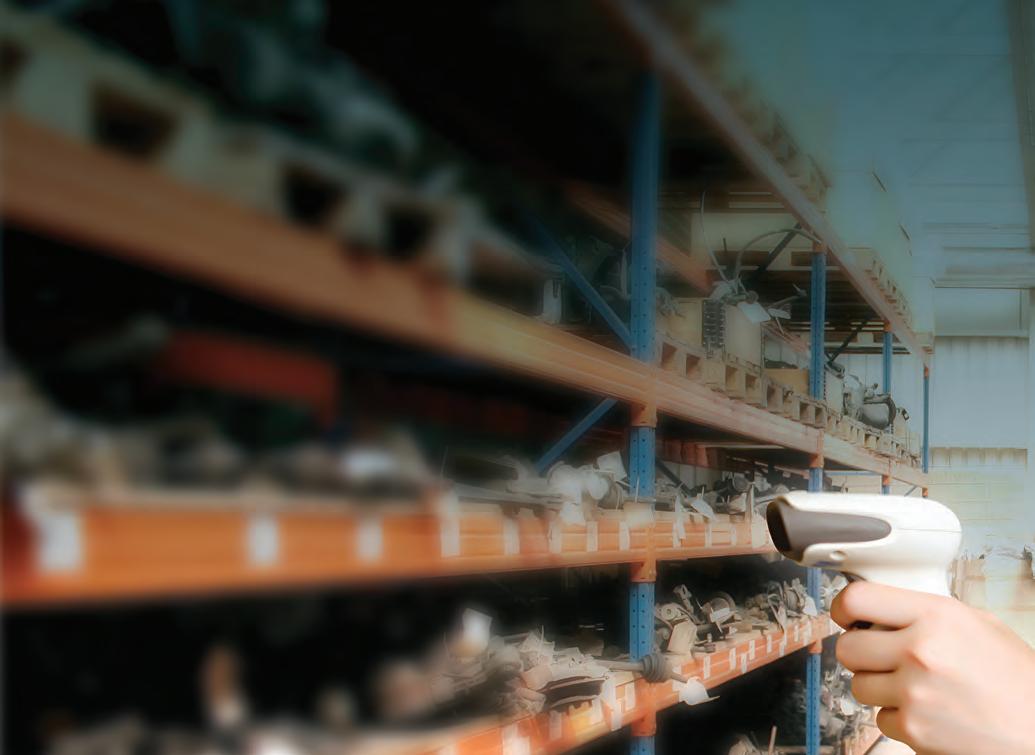

After more than 25 years working alongside auto recyclers to optimize their operations, I’ve seen a familiar pattern emerge in many businesses: one key individual, often a salesperson working on-site at the office, ends up wearing too many hats. They’re quoting parts, checking inventory, coordinating shipping, and following up on payments. Meanwhile, the rest of the team is underutilized or unclear about their responsibilities. This imbalance doesn’t just create stress; it slows down the entire operation and makes it harder to grow.
The good news? It’s fixable. With the right tools in place, you can bring structure to your operations, empower your team, and build a smoother, more efficient business. That’s exactly what a modern yard management system like ProgiPac is designed to do.
When roles and processes aren’t clearly defined, tasks get duplicated, missed, or delayed. ProgiPac addresses this by providing clear workflows for sales, inventory, shipping, accounting, and management. With a strong structure in place, your team works more efficiently, and your business runs more smoothly.
Whether employees are in the warehouse, at the counter, or working remotely, ProgiPac keeps everyone in sync. As a cloudbased platform, it gives your team access to real-time information at any moment, from anywhere. All they need is a device and an internet connection.
A common stressor in daily operations is not knowing where things stand. Did the part ship? Is it in stock? Did the customer pay? ProgiPac gives your team full visibility into every order: what’s been quoted, what’s in stock, what’s shipped, and what’s paid. The information is always up to date and easy to find, so your team can respond quickly and confidently.
Hiring and training new staff can be a challenge in this industry. That’s why ProgiPac is designed to be intuitive and easy to learn. New employees can get up to speed quickly, so you can grow your team without slowing down your operations.
ProgiPac was developed in close collaboration with auto recyclers, making it a solution that truly reflects how your business operates day to day. Whether you’re a small team or a growing operation, you’ll benefit from a robust, scalable tool backed by industry-trained customer support.
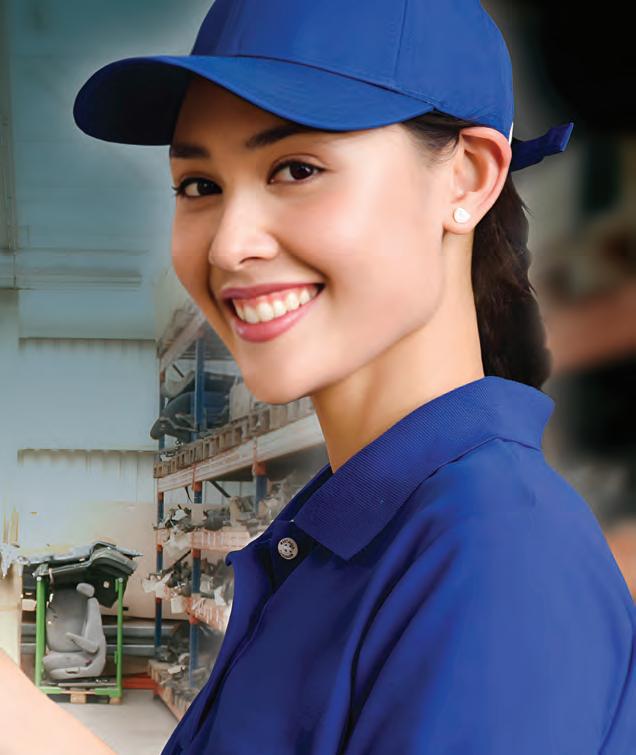
A modern yard management software like ProgiPac helps you create structure, improve communication, and give employees the tools they need to do their best work. If you feel your team could go further, or your operations deserve better, now is the time to level up. TB
Mathieu Godon is the Operations Manager for ProgiPac. He has over 25 years of experience working alongside auto recyclers and has successfully implemented ProgiPac in numerous recycling businesses. He is supported by William Caldwell, a U.S.-based technical representative located in Michigan, who serves recyclers across the United States.
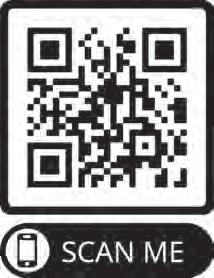

ProgiPac gives you the tools to work smarter, stay organized, and run a more efficient, profitable business.
• Fully integrated, cloud-based and mobile-friendly
• Accessible from anywhere, on any device
• Streamlines operations from sales to shipping
• Backed by industry-trained customer support
• Fast onboarding with an easy-to-learn interface
Experience the benefits of ProgiPac firsthand with our 45-day free trial offer, available until August 31, 2025. Conditions apply.
Join the growing number of recyclers transforming their operations with ProgiPac.


Cross-training is an essential strategy for developing a well-rounded and collaborative workforce. It allows employees to gain a deeper understanding of how different roles and departments interconnect within the organization. For new hires, cross-training is particularly valuable, providing them with insights into how their work impacts various areas of the business. By familiarizing themselves with different functions and processes, employees become better equipped to collaborate effectively, improve productivity, and adapt to challenges as they arise.
In addition to the practical benefits, cross-training plays a significant role in fostering a culture of inclusion and unity. It helps employees see themselves as part of a cohesive team rather than isolated in their individual tasks. This shared knowledge encourages a sense of camaraderie and boosts overall employee engagement, ultimately contributing to a more agile and cooperative organization.
Regularly reviewing and aligning your compensation strategy with industry standards is critical to attracting and retaining top talent. Checking with your Department of Labor to assess the median wage for positions within the specific field ensures that your pay scale remains competitive. While financial incentives are not the sole motivator for every employee, competitive compensation is a significant factor in their decision to join and stay with the company.
Fair and equitable pay demonstrates that you value your employees and recognize their contributions. Offering competitive wages is not only essential for reducing turnover but also reinforces a culture of respect and appreciation. By investing in fair compensation, you create a more loyal and motivated workforce, which leads to higher morale, better performance, and long-term retention.

Open communication is the foundation of a successful organization. Taking time each week for team meetings or visiting different departments to check in with staff is crucial. During these interactions, ask questions like: “Is everything going smoothly?” “Are there areas where you feel under-trained or lack the necessary tools?” “What are your long-term goals, and how can we support you in reaching them?”
By prioritizing communication, you show your team that you genuinely care about their well-being and professional development. These regular checkins provide an opportunity to address concerns early on and prevent small issues from becoming larger problems. Open communication cultivates a culture of transparency, trust, and collaboration, leading to a more engaged and cohesive

team. Employees who feel heard and supported are more likely to be motivated and productive, driving the organization’s success.
Employees’ most important desire is to feel valued and appreciated by their employer. Simple gestures of recognition, such as acknowledging their hard work, offering praise for accomplishments, or providing regular feedback, can have a profound impact on morale and job satisfaction. These small acts of appreciation go a long way to solidifying the employer-employee relationship and fostering a culture of mutual respect. When employees feel cared for, they are more motivated, engaged, and loyal to the company. Demonstrating consistent appreciation not only boosts
employee morale but also strengthens the foundation of trust within the organization. By recognizing and celebrating the efforts of your team, you create a positive work environment where employees thrive, ultimately contributing to the long-term success and growth of the organization.
Creating a positive work environment involves a commitment to employee development and well-being. By investing in cross-training and fostering open communication, employers can enhance collaboration and skill development. Offering competitive wages ensures employees feel valued, while showing genuine care for their well-being strengthens loyalty and job satisfaction. Together, these efforts contribute to a thriving workplace, improving both recruitment and retention. TB
Event planner Kim Glasscock opened Award Winning Events in January 1999 and built the business primarily focused on the automotive industry. Working with the Automotive Recyclers Association for 18 years, she is very familiar with the inner workings of this industry. Now, she is applying her expertise to growing regional industry events thought Automotive Recycling Advocacy, her new business with partner Sandy Blalock.

Many salvage yards don’t realize the full benefits of consolidating their shipping with one provider. Managing shipping in-house often means juggling multiple carriers, negotiating rates, handling claims, and keeping track of shipments – all while trying to run a business. If your yard doesn’t have a dedicated logistics expert overseeing all aspects of shipping, you may be spending more time, money, and effort than necessary. Partnering with a single shipping provider can streamline operations, reduce costs, eliminate inefficiencies, and improve reliability. Instead of spending valuable time managing shipments and troubleshooting issues, your team can focus on core business operations like sourcing, sales, and customer service. Still not convinced? Here’s a closer look at six key benefits of consolidating your shipping with one provider:
1. COST SAVINGS & BETTER RATES
• Partnering with a shipping provider gives you access to bulk buying power, meaning you’ll benefit from lower rates than if you were negotiating directly with multiple carriers.
• Many shipping partners have pre-negotiated rates with major carriers, allowing you to take advantage of discounts you wouldn’t get on your own.
• Consolidating your shipments means fewer fees, surcharges, and unexpected costs that can add up when working with multiple carriers individually.

• Having one point of contact for all your shipping needs means you don’t have to waste time dealing with multiple carriers, invoices, and tracking systems.
• Your provider will ensure a consistent shipping process, which reduces errors, minimizes delays, and improves overall operational efficiency.
• Instead of spending hours troubleshooting lost shipments or misrouted freight, you’ll have a dedicated partner managing it for you.
• A dedicated shipping partner monitors your shipments proactively, tracking them from pickup to delivery and handling disputes, claims, rebills, and any issues that arise.
• Freight and parcel shipping can be complicated – especially when dealing with LTL shipments, international shipping, or damaged freight. An experienced logistics partner knows how to navigate these challenges efficiently.
• Your team won’t need to waste time figuring out carrier rules, freight classes, accessorial fees, or compliance regulations – your provider will handle it.
4. SCALABILITY & FLEXIBILITY
• As your business grows, your shipping needs will change. A shipping partner can adjust strategies, carrier selection, and capacity to match your evolving needs.
• If you’re expanding to new markets or

increasing shipment volume, a logistics provider already has the infrastructure in place to support your growth – without you having to hire additional staff or invest in new shipping systems.
• Whether you need freight, LTL, parcel, or even international shipping, a good partner has the flexibility to adapt and offer the right solutions.
5. IMPROVED VISIBILITY & DATADRIVEN DECISIONS
• A single provider offers centralized reporting and tracking, giving you a clear view of shipping performance, costs, and trends.
• Having access to real-time tracking and shipment analytics helps you make better business decisions, optimize shipping costs, and improve efficiency.
• A logistics partner can provide insights on how to reduce costs, improve transit times, and enhance service levels based on historical shipping data.
6. FOCUS ON CORE BUSINESS
• Time spent managing shipping, resolving issues, and negotiating rates is time taken away from growing your business, serving customers, and increasing profitability.
• Consolidating your shipping with a single provider reduces administrative work, freeing up your employees to focus on their primary roles rather than getting bogged down in logistics.
• Instead of stressing over shipping, you can focus your energy on running a more efficient and profitable salvage operation.
Tony Jenkins grew up in the salvage business (Birmingham Auto Parts, Birmingham, MO) and his family still owns a salvage yard in Kansas City.
After spending 25 years in corporate America, in 2020 Jenkins started InXpress 308. Today, the majority of the business for InXpress 308 is with salvage dealers and other related industries. InXpress 308 is the only place where you can ship blinker fluid, flux capacitors, and muffler bearings for free. To learn more about Jenkins and his background, visit https://www.linkedin.com/in/asjenkins.
If you’re an auto recycling facility yard that has struggled with achieving a seamless shipping experience, it may be time to explore working with a 3PL (third-party logistics provider) or freight broker. But not all logistics partners are the same. Here are a few key things to consider when choosing the right shipping provider:
• EXPERIENCE IN YOUR INDUSTRY: Choose a logistics partner that understands salvage yards and has experience with freight, LTL, and parcel shipping in the automotive industry.
• PROACTIVE CUSTOMER SUPPORT: Make sure your provider tracks shipments, handles issues proactively, and is responsive when problems arise.
• COMPETITIVE RATES & TRANSPARENT PRICING: Avoid partners with hidden fees or unreliable pricing structures.
• SCALABILITY: Ensure the provider can grow with your business and offer the flexibility you need as your shipping volume changes.
By consolidating your shipping needs with a single provider, salvage yards can save time, cut costs, and improve efficiency – all while ensuring reliable, professional service.
If you’re ready to explore how a logistics partner can benefit your business, reach out today for a conversation. The right partner can help you streamline operations and improve your bottom line. TB

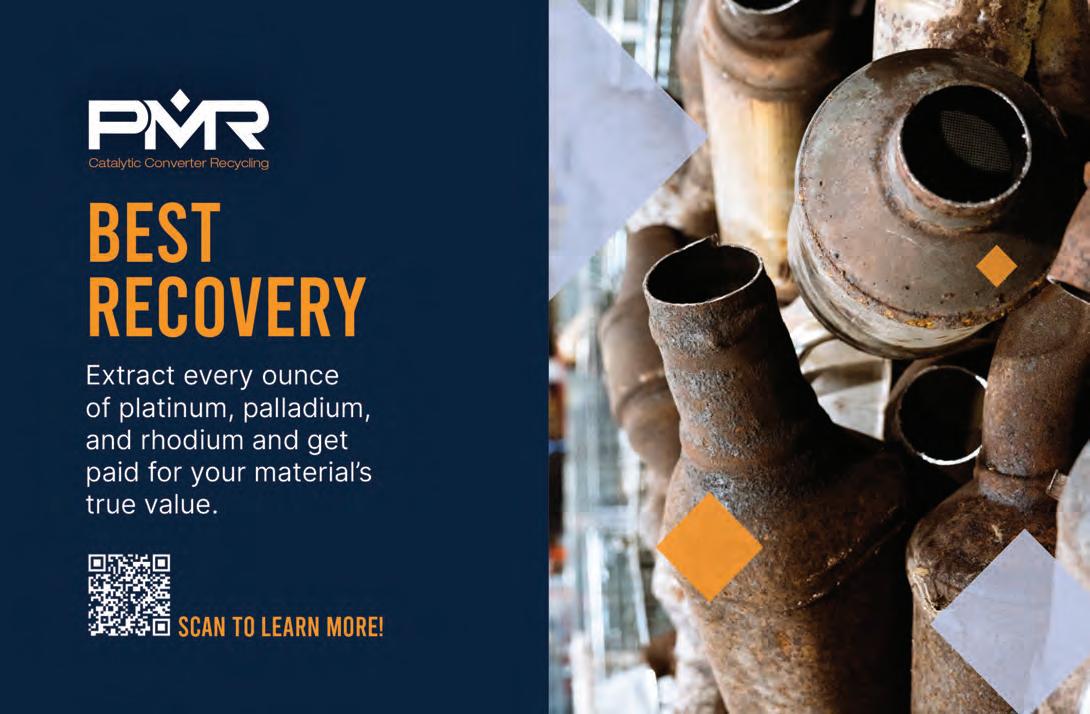
BY MIKE FRENCH
The U RG/Team PRP Training Conference, under the theme “Strength in Synergy,” marked its second successful year as a joint event. This dynamic convergence of industry professionals featured over 60 specialized training sessions and drew around 1,000 participants eager to learn from the finest minds in automotive recycling. The trade show featured 125 vendors showcasing a wide range of new technology, including AI-powered products, as well as machinery, electric vehicle safety tools, advanced inventory management tools, and more. Some vendors brought their knowledge to the recycler sessions, including Advanced Powertrain Solutions, EZ Suite, Hotlines, Vin Match Pro, UpNowIT, Currents, WHI, and Buddy Automotive Innovations.
The keynote session by Stephen Shapiro filled the room as an expert on innovating company growth. His signature formula helps scale towards success faster and more efficiently. “I realized that great companies don’t grow by cutting – they thrive by solving the right problems and unlocking untapped opportunities. Many companies treat innovation like a guessing game – but real success comes from a structured, strategic approach. FAST Innovation helps organizations solve the right problems – faster. Instead of chasing trends, they create a stable foundation for continuous growth – turning innovation into their greatest advantage.” He suggests companies Focus, Ask, Shift, and Test.
• Focus = Differentiate. Innovate where you differentiate means to drive stability and maximize impact, you need to know where to double down your investments.


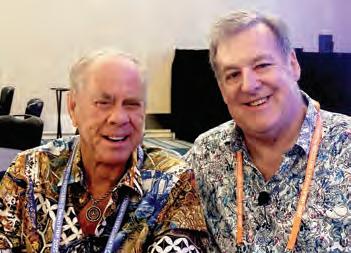
• Ask = Reframe. Don’t think outside the box; find a better box. Everyone will be equipped to reveal hidden solutions to difficult problems by asking better questions.
• Shift = Solve. Expertise is the enemy of innovation. Your teams will find breakthrough solutions faster through effective collaboration and by looking beyond their areas of expertise.
• Test = Experiment & Implement. Don’t fail; experiment. Don’t glorify failure. Instead, embrace practical experimentation as a means of reducing risk.
Central to the event was the scholarship fundraiser auction, which generated over $160,000. Additionally, the event raised an extra $30,000 to support

a fellow industry member facing a kidney operation, highlighting the community’s generosity and solidarity. Delivering the keynote address, URG founders Ron Sturgeon and Bill Tolpa –both celebrated figures in the industry – shared the stage to detail the founding of URG.
Bill Tolpa has been an influential figure since his early years. At the age of 7, he started delivering milk at the family dairy store, and by 13, he was working in the carnival business. His entrepreneurial spirit led him to buy a small six-bay repair shop at 18, while continuing to work at the carnival.
In 1998, Bill sold his repair shop and founded Tolpa’s Auto Parts, an auto recycling venture. It began as a green field; like many recyclers, an old farm turned into a multi-million-dollar
Mike French is retired after 39 years of business in the automotive recycling industry. He is an author, publisher, consultant, and speaker. Mike is the founder and executive director of the Christian Auto Recyclers and Vendors Association (CARVA) and will be at upcoming recycler trade shows and events. Mike is available to speak at your group, conference, or event. He loves to share inspirational stories that demonstrate how the Word of God actively changes lives. He can be reached at mike@carva.group. Visit www.CARVA.group and/or www.PowerPackedPromises.com.
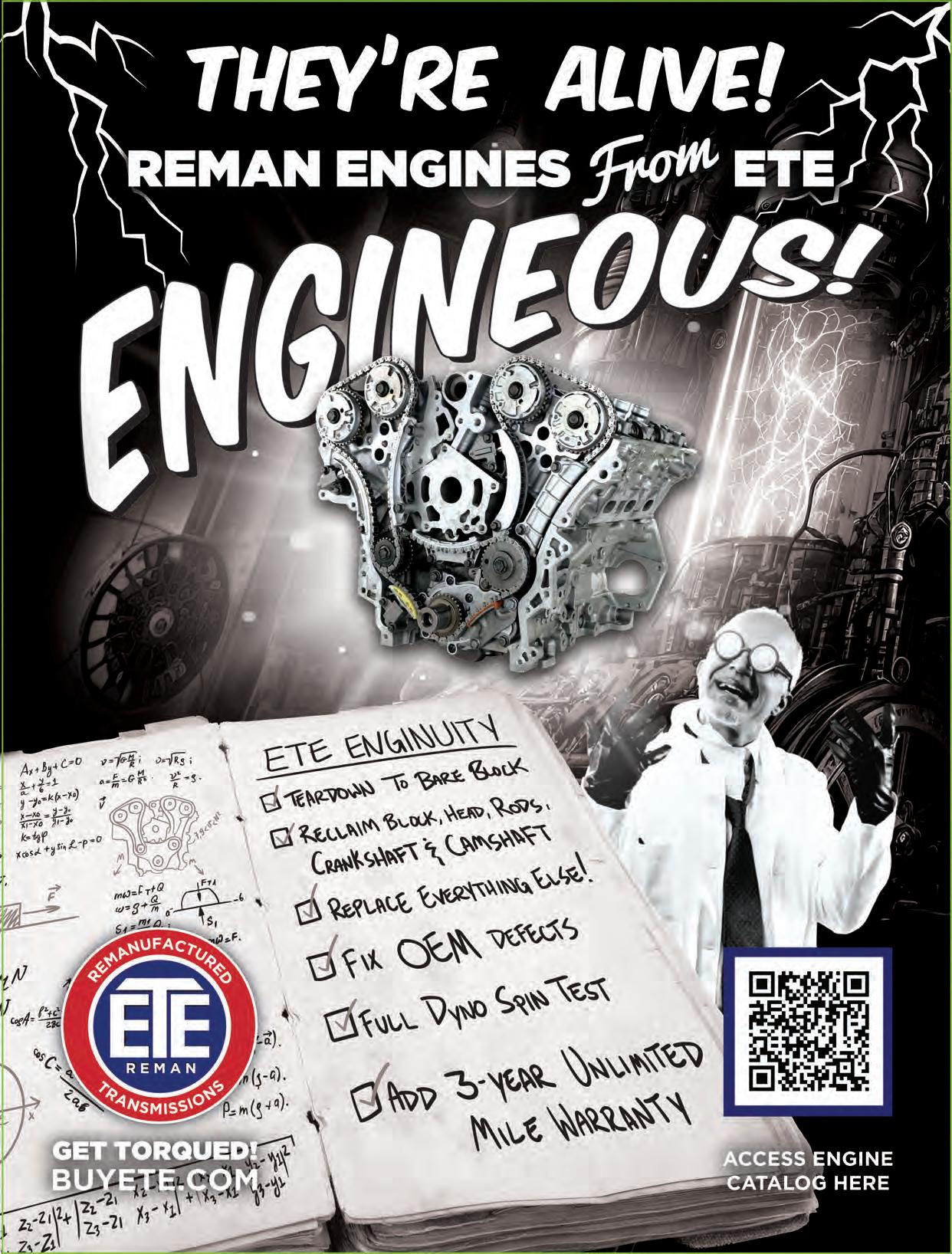


business. In 2019, he also founded UsedCycleParts, an online store specializing in used motorcycle and quad parts. Throughout the years, he was not afraid to try new ideas. He was a prominent leader in the industry, serving as past president of both ARANY and ARA, as well as numerous other civic organizations.
Today, Bill remains a vital force in the industry, advocating for advancements in automotive recycling. With 35 years of experience, he continues to mentor and lead, ensuring the sector thrives for future generations.
Ron Sturgeon’s life story is one of overcoming adversity and achieving remarkable success. Orphaned at 17, he faced homelessness but quickly rebounded, founding a successful automotive salvage business. Building this business to become a leader in the industry, he eventually sold it to Ford. Known for his expertise in entrepreneurship, Ron established the consulting firm “Mr. Mission Possible” and became a sought-after speaker.
His ventures include a 17-location auto salvage chain, ownership of DFW RENT-A-CAR, and a salon suite chain. Ron has been featured in the Wall Street Journal and Forbes, as well as appearing on CNBC’s “Blue-Collar Millionaire.”
As past president of the North Texas

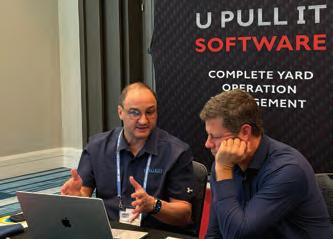
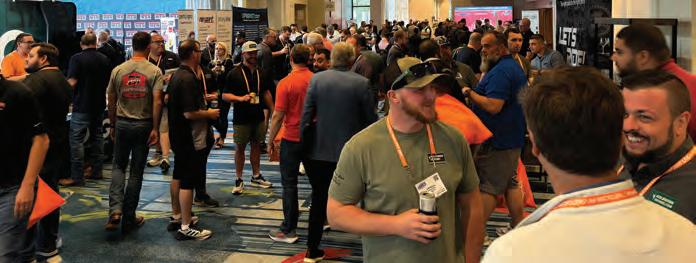
Enterprise Group, he is dedicated to fostering entrepreneurial growth.
Ron’s latest project is a car museum in Fort Worth, Texas, that opened in March of this year. This ambitious museum features over 200 cars, including 3,000 toys, making it the largest car museum in the state.
In 1995, Bill Tolpa, Ron Sturgeon, and Ed Lacy founded the United Recyclers Group (URG). Their mission was to counter a looming monopoly threat posed by Hollander’s acquisition of AutoInfo. They aimed to maintain control over crucial parts data and create an inventory management system designed explicitly for auto recyclers.
The industry was at a crossroads, with the two main competitors, Hollander and AutoInfo, dominating. When ADP later acquired Autoinfo Hollander, recyclers feared a monopoly. In response, “The Users Group” (TUG) was formed in 1995, advocating for independence and collaboration. Due to URG’s action, the Hollander interchange, which was previously nonlicensable, became licensable to the industry, allowing many thirdparty vendors to create new products. This forward-thinking move forever changed the face and landscape of the recycling industry.
The trio of founders – Sturgeon, Tolpa, and Lacy – mobilized industry leaders to challenge consolidation, showing how decreased competition could harm the sector. Their efforts gained momentum, leading the Federal Trade Commission (FTC) to investigate monopolistic practices by 1996.
By July 1996, URG officially launched, bringing innovation and collaboration to the forefront. They gathered partnerships and resources to develop new systems, such as the “Pinnacle” computer system, tailored for recyclers. By 1997, URG had introduced several programs, including coast-to-coast warranties and quality assurance protocols.
Today, URG is a testament to its founders’ enduring vision. By prioritizing member needs and industry-wide cooperation, URG has set new standards, ensuring a competitive and vibrant marketplace. Their pivotal actions led to significant FTC involvement, ensuring that the industry remains dynamic and fair.
By leading with superior products and services, URG reflects the legacy of innovation and unity envisioned by Tolpa, Sturgeon, and Lacy. This spirit continues to inspire and strengthen the auto recycling community, confirming that the synergy, among its members is more robust than ever. TB
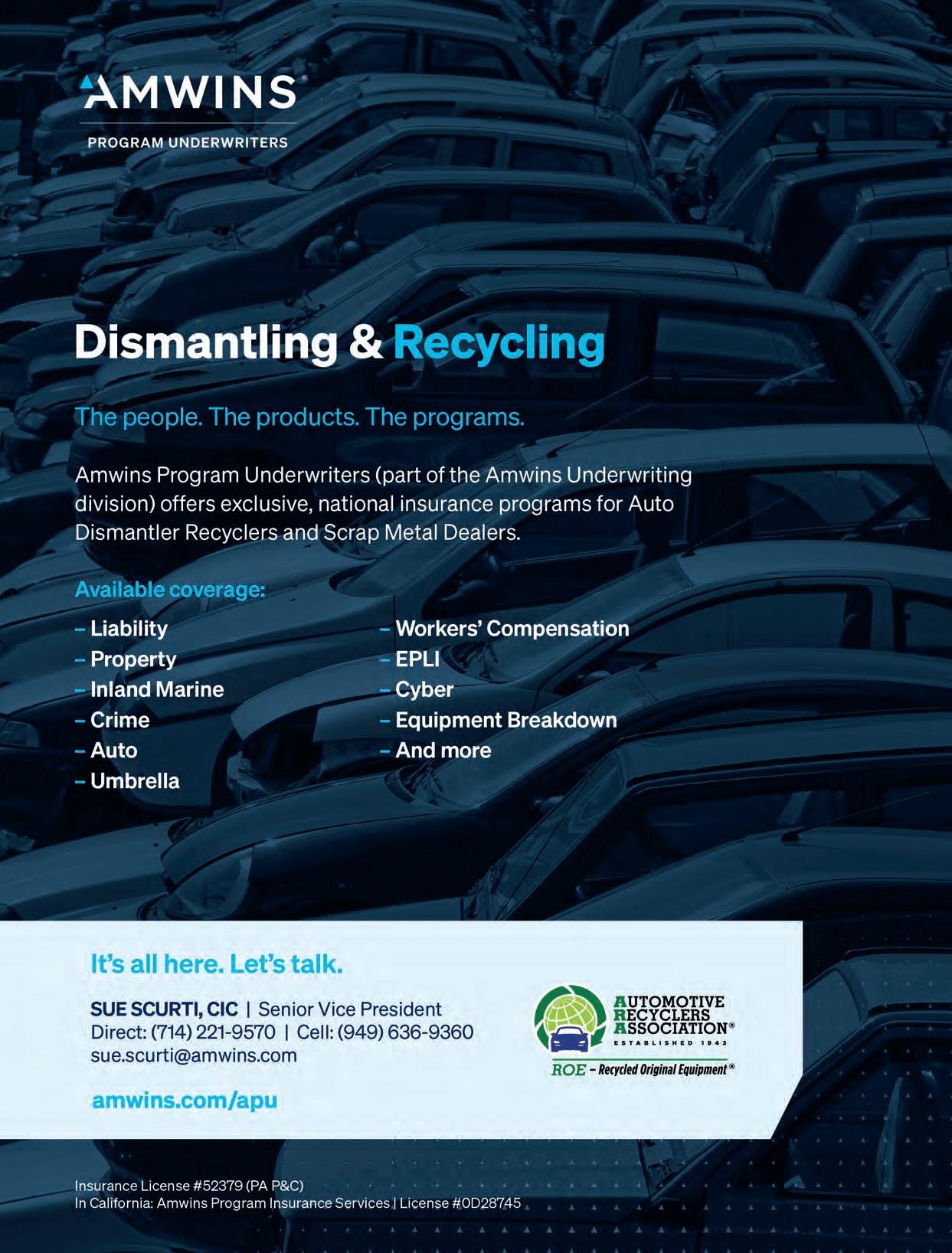
Automotive Recyclers Association (ARA) and United Recyclers Group (URG) announce a partnership agreement that will redefine industry standards with a new quality assurance program for professional automotive recyclers. The agreement’s signing took place at the recent United Recyclers Group Annual Conference and represents collaborative discussions that have occurred over the past year regarding what a unified quality assurance program might look like.
“This agreement represents a new path forward in industry collaboration and excellence,” said ARA Executive Director, Vince Edivan. “Using the work that both organizations have done in this area, we look forward to continuing to work together to develop and promote this new program. By combining the strengths of both organizations, we’re laying the groundwork for a unified quality assurance program that will benefit recyclers, repairers, and consumers alike.”
“With a shared commitment to excellence and building upon the framework we have established through discussion over the past year, URG and ARA will work side by side to drive positive change within our industry,” said Kristi Werner, CEO at URG. “This joint effort marks the beginning of a new era in automotive recycling. We’re proud to be working with ARA to create a program that reflects the real value and professionalism of modern recyclers.”
The journey towards this milestone has been marked by unwavering dedication from representatives of both organizations. Building on the work of ARA’s CAR Certification and Gold Seal program and URG’s

ISO 900, the new quality assurance program will reflect a collective dedication to advancing industry best practices and standardization and to gain recognition across insurance, collision, and mechanical sectors, the program demonstrates a shared commitment to raising the profile of certified professional recyclers and reflects a collective dedication to advancing industry best practices and standardization.
Shannon Nordstrom, longtime Chair of ARA’s Certification Committee and current ARA First Vice President, said of the agreement, “With these organizations working together our goal is to create a legacy of excellence for the quality parts and service that automotive recyclers provide all consumers in the automotive repair industry, both mechanical and collision.”
“This partnership underscores the power of unity within our sector,” remarked Kristi Werner. “By leveraging our combined expertise and resources, we can establish a new benchmark for quality assurance in automotive recycling.”
URG and ARA will continue working together over the coming months to finalize the certification framework, pilot the program with select yards, and launch the first phase of implementation. TB
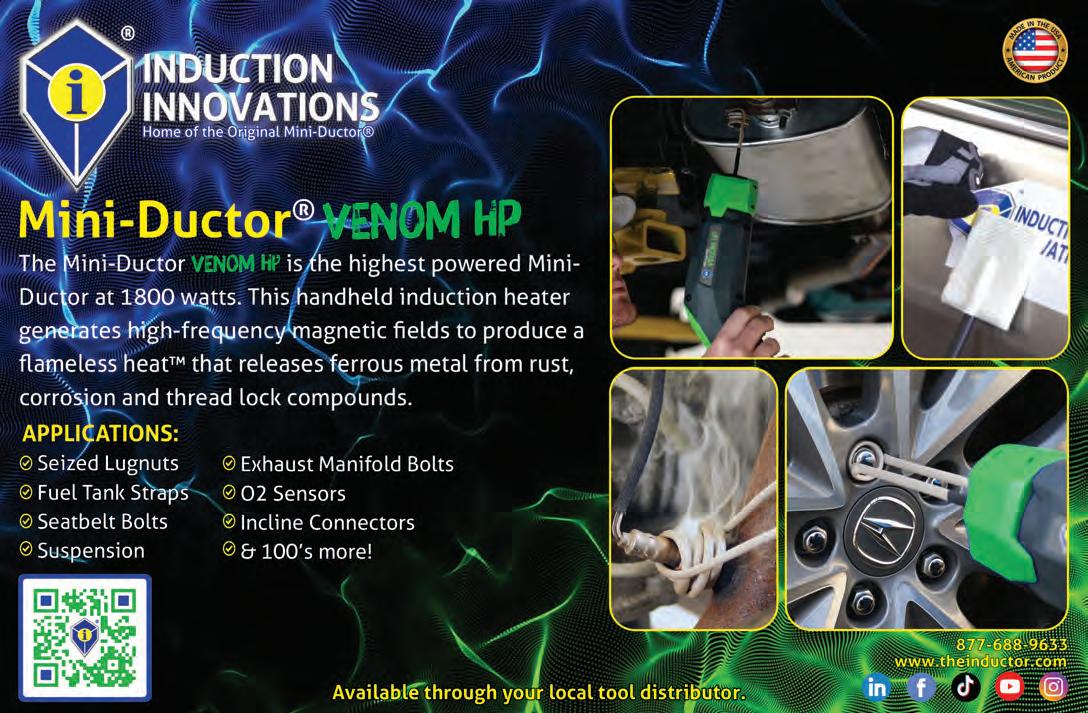
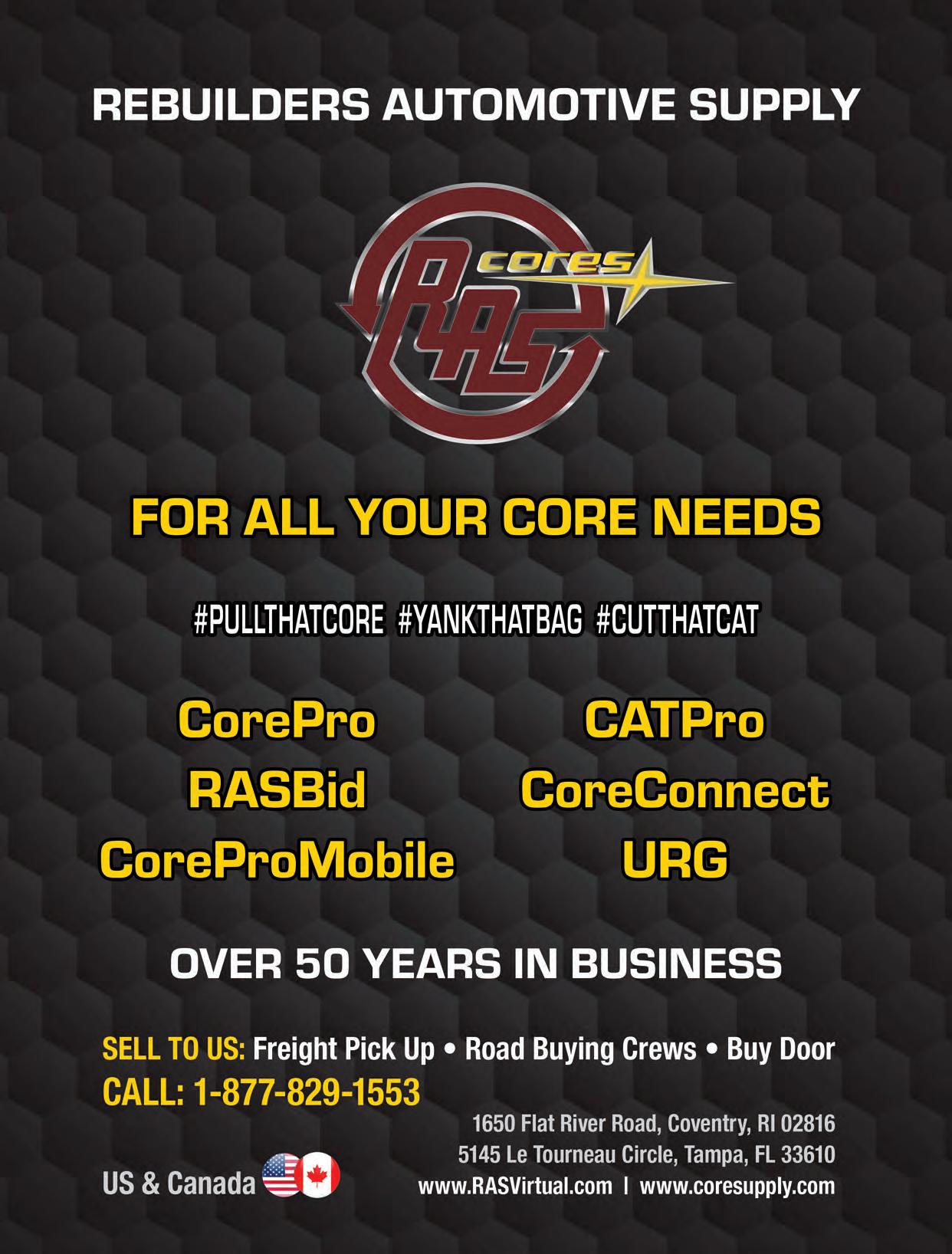
PHOTOS & ARTICLE BY MIKE FRENCH
The 2025 PARTS Summit & Expo, held June 6th and 7th at the scenic Seven Springs Mountain Resort in Pennsylvania, proved to be a powerhouse event for the automotive recycling industry. Whether you’re a seasoned recycler or new to the business, this conference packed the right combination of learning, leadership, and lively discussion that defines a truly great industry gathering!
From dynamic speakers to top-tier vendors and generous sponsors, the event offered attendees a wealth of takeaways. One standout was industry expert JC Cahill, who shared valuable insights on turning negative sales experiences into opportunities to create lifelong customers. He also tackled one of the industry’s most pressing challenges: hiring and retaining the right people. His solution? Look outside the industry.
According to Cahill, some of the best employees aren’t coming from traditional backgrounds. “Bartenders and restaurant servers make outstanding salespeople – they understand how to serve people,” he explained. “Farmers and field workers? They’re ideal parts pullers – comfortable with tools and being outdoors. And if you’re looking for dismantlers, check places like Midas or tire shops – these folks already know how to turn a wrench the right way.”


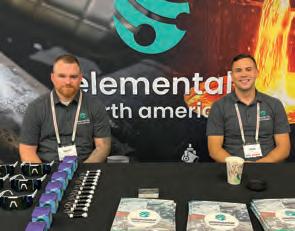
Another highlight was a highly practical roundtable moderated by Theresa Colbert, Nathan Novak (Novak’s), and Alex Mayak (Stoystown), who emphasized the need for clear policies and procedures in every operation. Their message was consistent and strong: employee training is essential, and expectations must be clearly defined. They stressed that consistent procedures ensure efficiency, minimize confusion, and uphold quality across the board.
“When your customers know exactly what they’re getting – clean parts, proper packaging, fair pricing – they trust you. And that trust builds your business,” the panelists agreed.
A particularly passionate discussion took place around professional licensing in Pennsylvania, led by Sandy Blalock and engaged voices
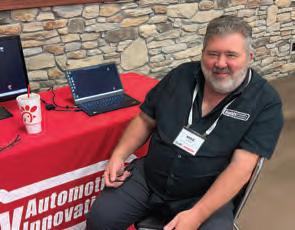
The session –entitled “The Good, the Bad, and the Ugly” – sparked lively conversation around the pros and cons of licensing.
On the pro side, licensing was seen
as a way to improve quality assurance, promote professionalism, enhance the industry’s public image, and ensure a fair and level playing field. It could also open doors to new benefits, partnerships, and greater environmental oversight.
On the con side, attendees voiced valid concerns over cost, administrative headaches, rigid policies that don’t fit every operation, regulatory inconsistencies, and the potential to hinder innovation or slow business growth.
All in all, the PARTS Summit & Expo delivered a meaningful experience for attendees – packed with ideas, solutions, and important dialogue that will shape the future of automotive recycling. TB

25th Annual Golf Tournament
Thursday July 31, 2025
It’s that time of the year for GOLF!
Get ready for a full day of golf at the Chippanee Golf Club in Bristol, CT. Enjoy a full day of golf, food and FUN! Lunch and Dinner hours with Prizes and Raffles. Come and golf with us or take advantage of one of our many sponsorship opportunities. Space is limited so don’t wait to get registered!
$175 Per Person:
• Round of Golf with Cart
• Shot Gun Start
• Use of Driving Range
• Use of Practice Putting Green
• Lunch and Dinner
Registration 10am - 11am
Lunch w/ & Beer on patio 11:00am - 12:00pm
Shotgun Golf 12:30pm Dinner
Cash bar following Golf
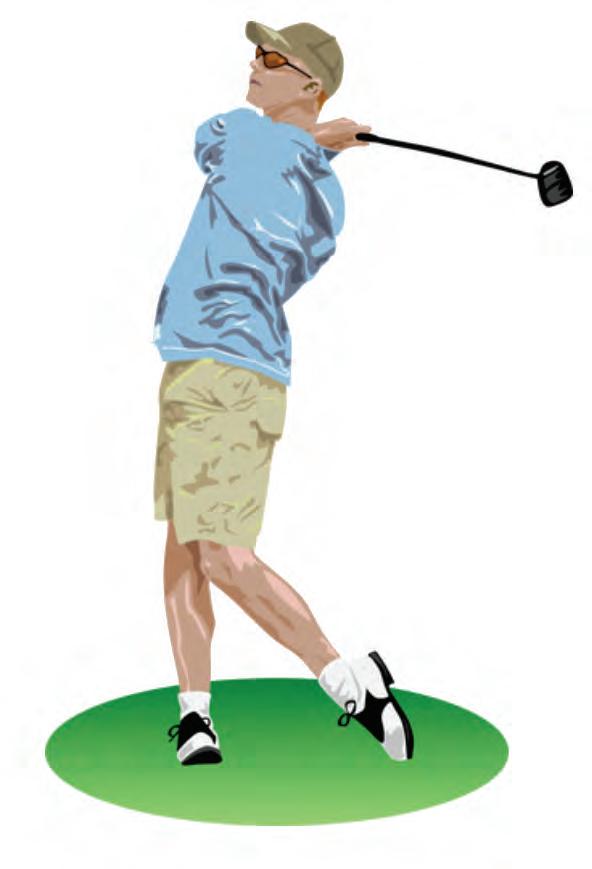
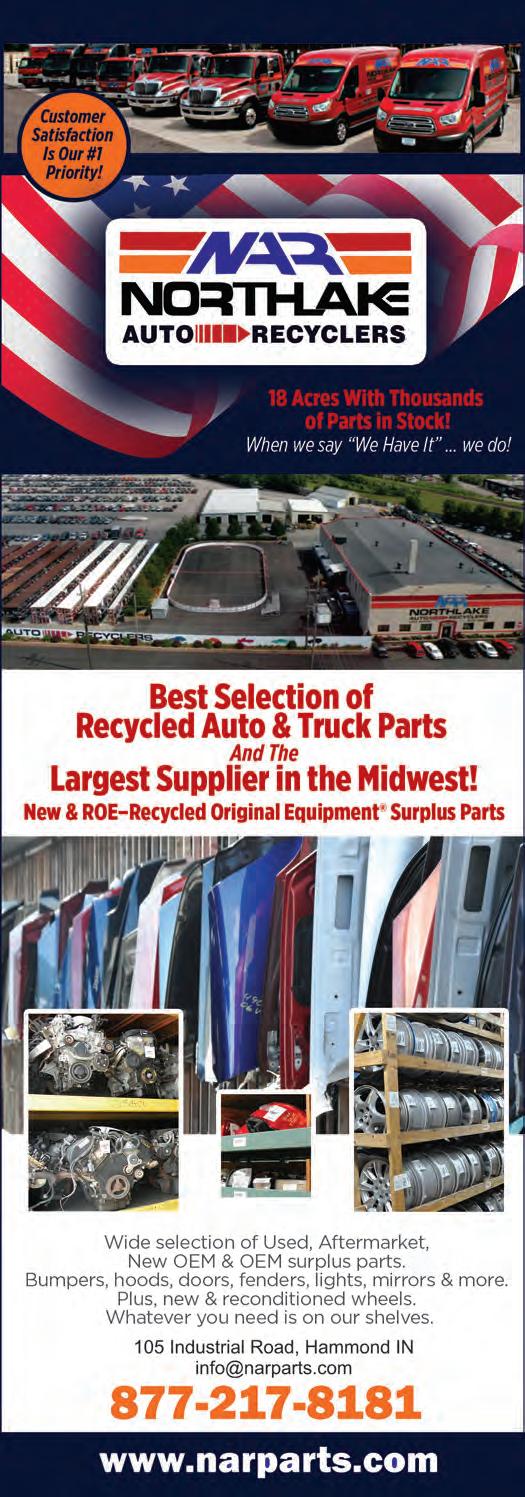


BY RECYCLERS FOR RECYCLERS
IMPORTANT: RENEW YOUR SUBSCRIPTION AT https://autorecyclingnow.com/toolbox/subscribe THIS IS REQUIRED TO CONTINUE RECEIVING THE TOOLBOX!
The Automotive Recycling ToolBox™ Edition delivers peer-to-peer articles with information that you would get while networking at industry events and trade shows. Our mission is to be current, educational and inspirational. We bring you:
• Educational and instructional “how-to” articles written by fellow recyclers, top industry professionals, leaders & trade show speakers.
• Information from providers of industry-related products and service you typically find at industry events and trade shows.
PUBLISHED 6 TIMES A YEAR AutoRecyclingNow.com/Toolbox
AUTOMOTIVE RECYCLERS ASSOCIATION OFFICERS
YOUR TOOLBOX TEAM
Published by Driven By Design LLC
EDITOR
Caryn Smith, Toolbox@a-r-a.org
ART DIRECTOR
Caryn Smith
ADVERTISING SALES
Jay Mason, ToolboxAds@a-r-a.org
EXECUTIVE DIRECTOR
Vince Edivan
Automotive Recyclers Association
Vince@a-r-a.org
SENIOR DIRECTOR OF ASSOCIATE OPERATIONS
Jessica Andrews, Jessica@a-r-a.org
SENIOR DIRECTOR OF MEMBER SERVICES
Kelly Badillo, Kelly@a-r-a.org
VICE PRESIDENT OF STRATEGY AND GOVERNMENT AND REGULATORY AFFAIRS
Emil Nusbaum, Emil@a-r-a.org
CERTIFICATION CONSULTANT
Sue Schauls, Sue@a-r-a.org (319) 290-7843
PRESIDENT Eric Wilbert Wilbert’s U-Pull-It, LLC Williamson, NY eric.wilbert@wilberts.com
1ST VICE PRESIDENT Shannon Nordstrom Nordstrom’s Automotive, Inc. Garretson, SD shannon@nordstromsauto.com
2ND VICE PRESIDENT/TREASURER Sean Krause Speedway Auto Parts, Ltd. Joliet, IL sean.krause@speedwayap.com
SECRETARY Tom Andrade Everett’s Auto Parts Brockton, MA tandrade@everettsautoparts.com
IMMEDIATE PAST PRESIDENT Nick Daurio Daurio Auto Truck Pueblo, CO nick@daurioauto.com
ARA CONTACT INFORMATION
ARA Headquarters Manassas, VA (571) 208-0428 staff@a-r-a.org www.a-r-a.org
To reach readers with print & digital advertising, email ToolboxAds@a-r-a.org
For editorial contributions, e-mail Toolbox@a-r-a.org or call (239) 225-6137

